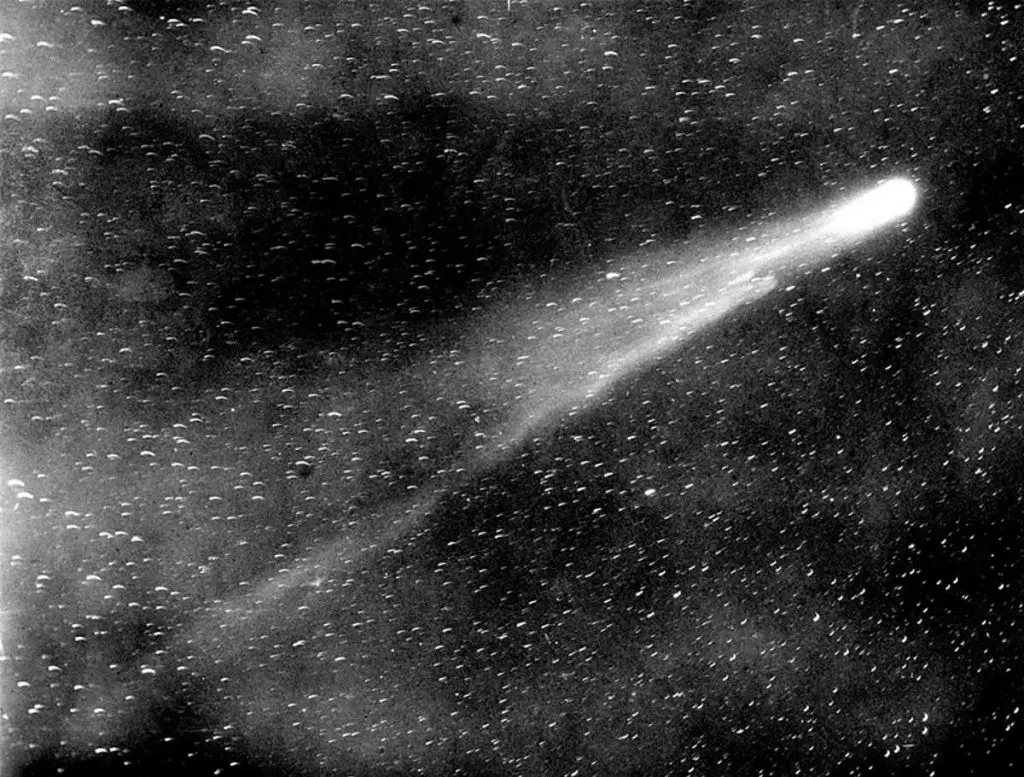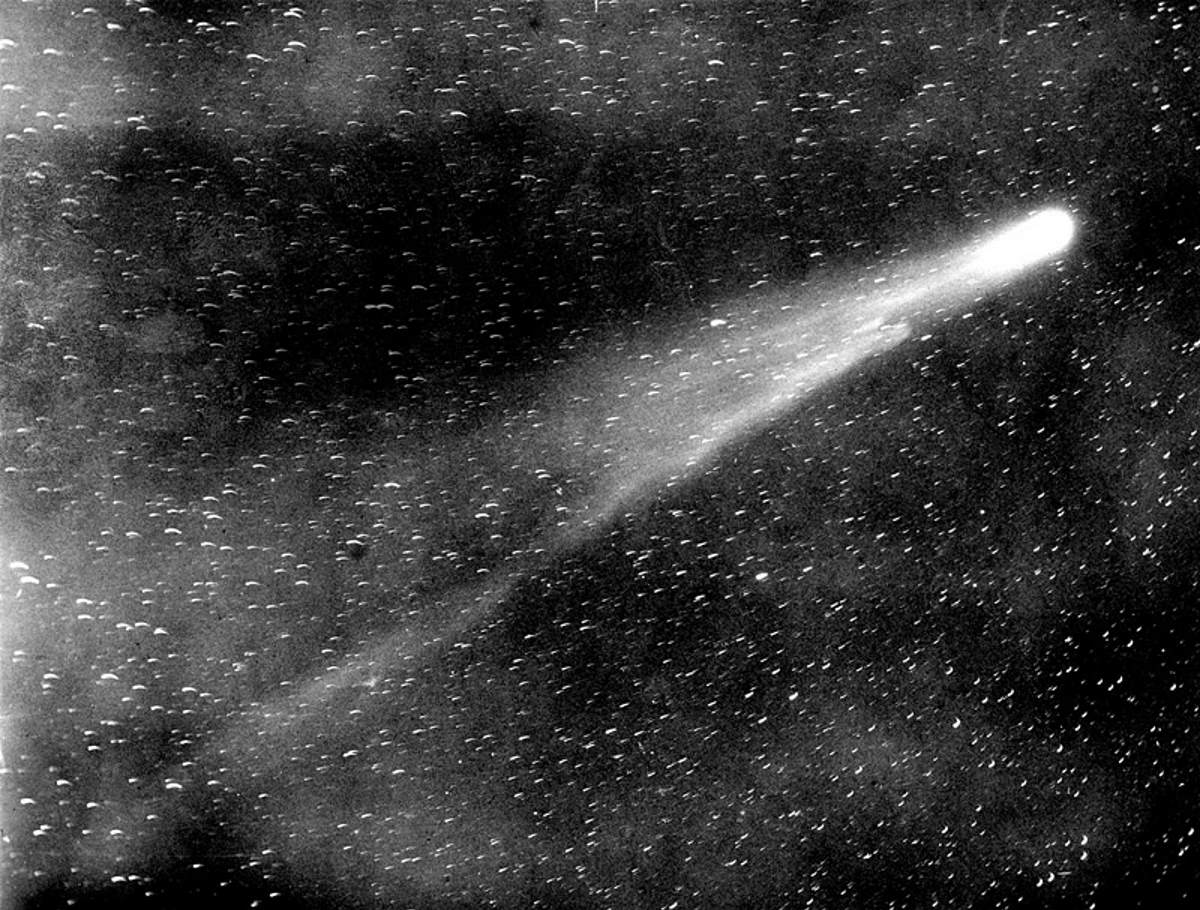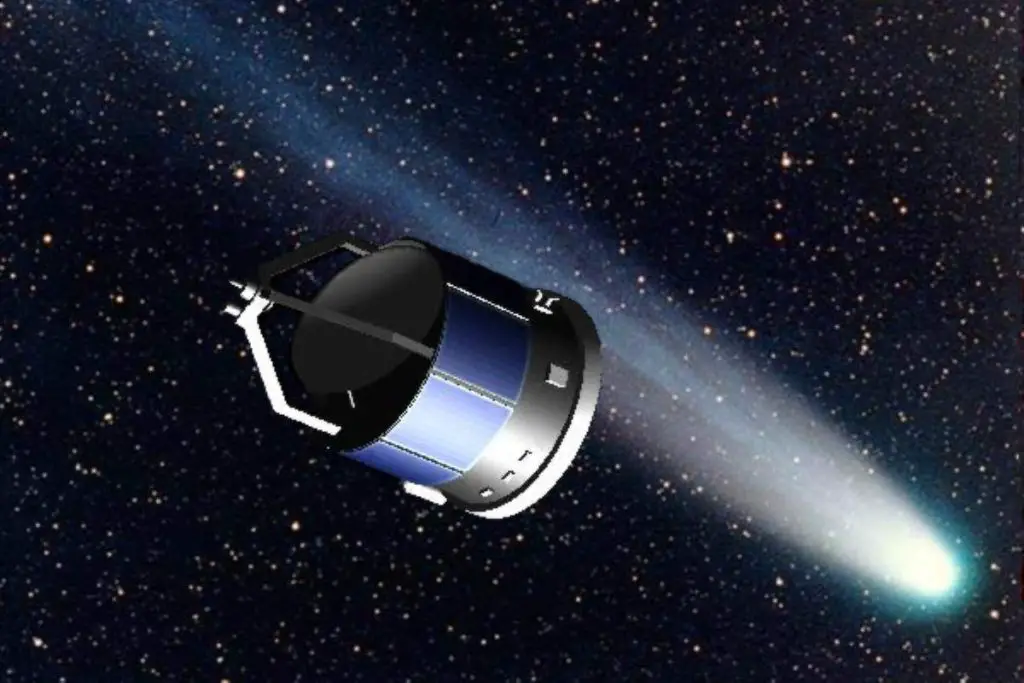On May 19, 1910, the Earth passed through the tail of Halley’s Comet. Prior to the date, using spectroscopy, astronomers detected cyanogen, a very deadly poison in the comet’s tail. This caused panic. French astronomer Camille Flammarion (26 February 1842 – 3 June 1925) even claimed that life on Earth would end because of this.
Today’s (May 19) story of what happened this day in Science, Technology, Astronomy, and Space Exploration history.
1910 arrival of Halley’s Comet
Halley’s Comet’s 1910 arrival was spectacular: it flew by about 13.9 million miles (22.4 million kilometers) from Earth, or just about 0.15 astronomical units (AU, see notes 1).
The comet came into naked-eye view around April 10 and came to perihelion (the closest point) on April 20. It was at its closest, therefore its brightest, between May 14 and 22. On May 19, the Earth passed through the comet’s tail.
As explained above, French astronomer Camille Flammarion claimed the gas from the comet’s tail “would impregnate [the Earth’s] atmosphere and possibly snuff out all life on the planet”.
But, most astronomers at the time disagreed with Flammarion. For example, American businessman, author, mathematician, and astronomer Percival Lowell (March 13, 1855 – November 12, 1916) noted that the gas was “so rarefied as to be thinner than any vacuum”, so, therefore, posed no threat.
Despite contrary evidence, Flammarion’s pronouncement led to a panicked buying of gas masks and quack “anti-comet pills” and “anti-comet umbrellas” by the public. The tabloid papers contributed to that hysteria.
As most astronomers pointed out, the gas was so diffused that the world suffered no ill effects from the passage through the tail of Halley’s Comet.

In fact, Flammarion was famous for its spectacular (but wrong) claims. In 1907, he wrote that he believed that dwellers on Mars had tried to communicate with the Earth in the past. He also believed in 1907 that a seven-tailed comet (whatever it was) was heading toward Earth. Both of these claims aren’t true, obviously.
The 1910 arrival of Halley’s Comet was notable for several reasons:
- It was the first approach in which photography techniques existed. So it was photographed for the first time in history.
- The first spectroscopic data of Halley’s Comet were obtained (see notes 2).
- The Earth actually passed through the tail of the comet.
- Halley’s comet added to the unrest in China on the eve of the Xinhai Revolution (1911 revolution) that would end China’s last imperial dynasty, the Manchu-led Qing dynasty. As James Hutson, a missionary in Sichuan Province at the time, recorded: “The people believe that it indicates calamity such as war, fire, pestilence, and a change of dynasty. In some places on certain days the doors were unopened for half a day, no water was carried and many did not even drink water as it was rumored that pestilential vapor was being poured down upon the earth from the comet”.
- Le Bon Marché, a well-known department store in Paris used Halley’s comet in an advertisement campaign.
- American writer Mark Twain (November 30, 1835 – April 21, 1910) was born exactly two weeks after the comet’s perihelion in its 1835 approach. In his autobiography, published in 1909, he wrote, “I came in with Halley’s comet in 1835. It is coming again next year, and I expect to go out with it. It will be the greatest disappointment of my life if I don’t go out with Halley’s comet. The Almighty has said, no doubt: ‘Now here are these two unaccountable freaks; they came in together, they must go out together’.” Twain indeed died on April 21, 1910, the day following the Halley’s comet’s subsequent perihelion. The 1985 fantasy film The Adventures of Mark Twain was inspired by the quotation.
- The Great January Comet of 1910, formally designated C/1910 A1, surpassed Halley in brilliance. It appeared in January 1910 and was already visible to the naked eye when it was first noticed. At its brightest, it outshone the planet Venus and was actually visible in broad daylight for a short period. That’s why it is often referred to as the Daylight Comet. It was possibly the brightest comet of the 20th century.
Notes
- The astronomical unit (AU) is roughly the distance from Earth to the Sun and equal to about 150 million kilometers (93 million miles) or ~8 light minutes (see: the speed of light – see how torturously slow it is).
- Spectroscopy is the study of the absorption and emission of light and other radiation by matter. It involves the splitting of light (or more precisely electromagnetic radiation) into its constituent wavelengths (a spectrum), which is done in much the same way as a prism splits light into a rainbow of colors. In fact, old-style spectroscopy was carried out using a prism and photographic plates. Modern spectroscopy uses a diffraction grating to disperse light, which is then projected onto CCDs (charge-coupled devices), similar to those used in digital cameras. The 2D spectra are easily extracted from this digital format and manipulated to produce 1D spectra that contain an impressive amount of useful data. Recently, the definition of spectroscopy has been expanded to also include the study of the interactions between particles such as electrons, protons, and ions, as well as their interaction with other particles as a function of their collision energy.
Sources
- “May 19, 1910: Halley’s Comet Brushes Earth With Its Tail” on Wired
- “Fantastically Wrong: That Time People Thought a Comet Would Gas Us All to Death” on Wired
- “Halley’s Comet: Facts about history’s most famous comet” on Space.com
- Halley’s Comet on Wikipedia
- Spectroscopy definition is taken from “Spectrometry and spectroscopy: what’s the difference?” on the ATA Scientific Instruments website
- Space Shuttle Endeavour’s Touchdown Meets Columbia’s Salute [An amazing photo from the past] - February 29, 2024
- Moon Landings: All-Time List [1966-2024] - February 23, 2024
- From Orbit to Ordinary: 10 Earthly Applications of Space Technology - January 23, 2024



